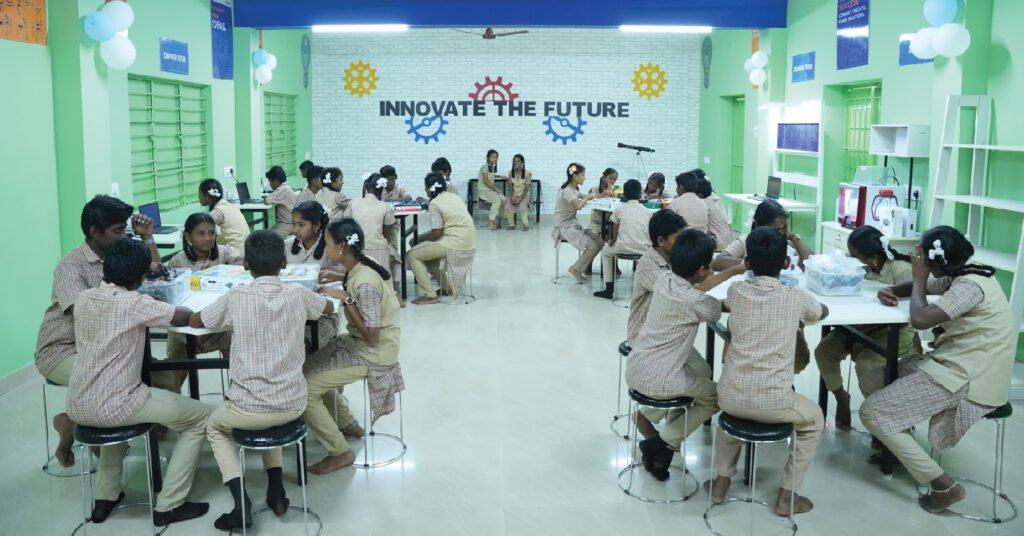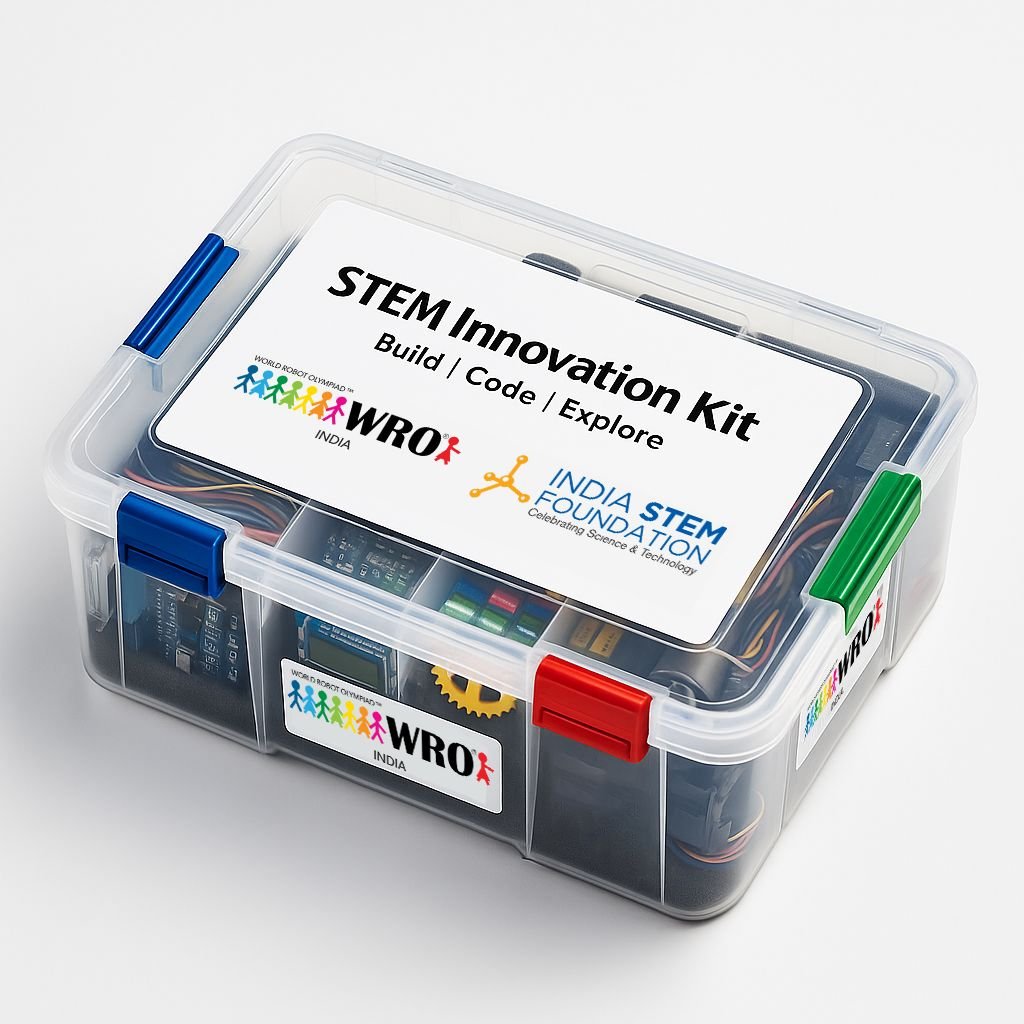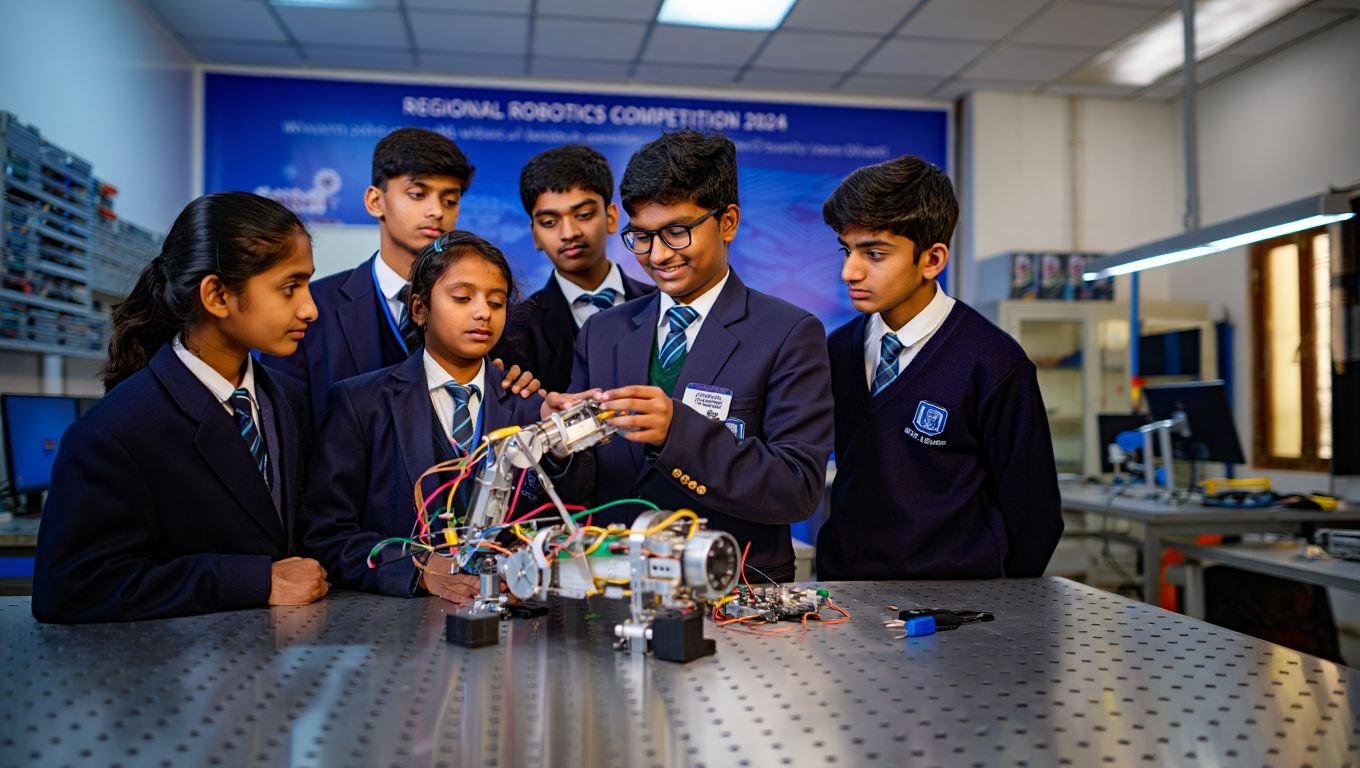In the modern world, STEM fields—science, technology, engineering, and mathematics—have grown in importance. It responds to the urgent need for highly skilled labour in industries vital to innovation, development, and technological advancement. Pupils with a STEM education are more capable of managing difficult circumstances, staying current with technology, and advancing society. Today, with technology advancing at a rapid pace, STEM education is crucial. It helps students develop their critical thinking skills, which motivates them to investigate, evaluate, and resolve real-world issues.STEM fosters traits like creativity, adaptability, and teamwork—all of which are critical in today’s globally linked and competitive labour market.
For India to progress economically and technologically, STEM education is essential. With a focus on science, technology, engineering, and maths, it gives pupils the tools they need to be innovative and solve problems. Partnerships between the public and commercial sectors improve quality and accessibility while training the workforce for the future. India STEM Foundation is responsible for organizing the World Robot Olympiad,
WRO India’s Future Innovator category inspires young brains to use robotics and inventive problem-solving to take on real-world difficulties. As they create and construct creative solutions, participants develop their technical, collaborative, and critical thinking abilities. The goal of this program is to develop the next wave of engineers and technology leaders.
Current State of STEM Education in India
There have been major advancements in STEM education in India, yet there are still substantial obstacles to overcome. The increasing awareness of STEM areas’ significance for the country’s technical and economic advancement has resulted in a constant increase in enrolment in these subjects. Nonetheless, a significant gap still exists between urban and rural communities, with urban areas having access to superior resources and infrastructure than their rural counterparts. Another serious problem is gender inequality since fewer girls are considering STEM professions despite several efforts to encourage diversity.
Government initiatives like Digital India, Skill India, and the National Education Policy 2020 have improved vocational training and introduced coding and digital literacy from an early age, which has been beneficial. Private sector and NGO contributions, including programs by the India STEM Foundation, have been instrumental in supplementing government efforts and bringing innovative teaching methods and resources to classrooms. To fully realise the promise of STEM education in India, despite these achievements, issues including out-of-date curriculum, inadequate teacher training, and restricted access to high-quality education in rural regions must be resolved. instruction.
The Role of Government and Policy Initiatives
Some policies of government to encourage STEM education are :
National Education Policy (NEP) 2020:
Emphasizes multidisciplinary education with a strong focus on STEM.
Introduces coding and computational thinking from early schooling. Promotes experiential learning and critical thinking skills.
Digital India:
Aims to enhance digital infrastructure and internet connectivity across the country. Facilitates the integration of digital tools and resources in STEM education. Supports online learning platforms and digital literacy programs.
Skill India:
Focuses on vocational training and skill development in STEM fields.
Establishes training centres and partnerships with industry to enhance employability. Encourages apprenticeship and hands-on learning experiences.
Atal Innovation Mission (AIM):
Promotes innovation and entrepreneurship through Atal Tinkering Labs in schools. Provides mentorship and resources to students for developing innovative projects. Encourages a culture of problem-solving and critical thinking.
Pradhan Mantri Kaushal Vikas Yojana (PMKVY):
Offers short-term training programs in various STEM-related fields.
Provides certification and placement assistance to trainees. Targets youth in rural and underserved areas to improve their job prospects.
Research and Development Initiatives:
Increased funding for R&D in higher education institutions.
Encourages collaboration between academic institutions and industry for research projects. Supports innovation hubs and incubators to nurture startups and new technologies.
Public-Private Partnerships (PPPs):
Encourages collaboration between government, private sector, and NGOs. Facilitates resource sharing, infrastructure development, and curriculum enhancement. Promotes innovative teaching methods and learning experiences.
Importance of Coding and Robotics in STEM
Artificial intelligence is required in the twenty-first century. Throughout the 20th century, artificial intelligence (AI) research and education were employed, but they were out of reach for the general public. Artificial Intelligence (AI) became widely accessible in the 2010s through smartphones and other gadgets; Google Assistant and Siri became indispensable virtual assistants. By the 2020s, when AI was being utilised as home servants and had made significant advancements in e-commerce, healthcare, and banking, it had become a ubiquitous part of people’s lives. Chatbots and recommendation engines, which were once thought to be cutting-edge, have become commonplace and have fundamentally changed how we use technology and get information.
Improves the Ability to Solve Problems:
Students are encouraged to think logically and break down difficult problems into small steps through the use of robots and coding.
Enhances the analytical and critical thinking abilities necessary for creativity.
Encourages Innovation and Creativity:
Encourage creativity in pupils by letting them develop and construct their creations. Promotes trial and error, which produces creative solutions.
Gets Ready for New Careers:
Gives pupils skills that apply to many other areas, including manufacturing, engineering, and technology. Improves one’s employability and preparedness for positions in the quickly changing tech industry.
Encourages Computational Thought:
Teaches pupils how to solve problems effectively by approaching them methodically. Imparts a thorough understanding of digital systems, an essential skill in the modern digital environment.
Develops Collaboration and Teamwork Skills:
Working in teams is necessary for many robotics and coding projects, which promotes cooperation and communication abilities. Inspires pupils to collaborate to accomplish shared objectives.
Encourages Gender Equality:
The goal of robotics and coding initiatives is frequently to close the gender gap in STEM. Gives boys and girls the same chance to pursue and succeed in the domains of technology.
Complies with Worldwide Trends:
The global standards and curricula for STEM education include robotics and coding as essential components. Guarantees that students are employable in a global labour market.
Encourages Interest in STEM Professions:
Early exposure to robotics and coding might pique a person’s interest in pursuing STEM-related employment and future schooling. Offers a direct route from schooling to jobs in tech fields with strong demand.
In conclusion, despite notable advancements in STEM education, India still faces formidable obstacles. Enrolment in STEM has increased as a result of growing awareness of the field’s vital role in economic and technological growth; nonetheless, gender imbalance in STEM fields and differences in resource access between urban and rural areas still exist. Government programs like Digital India, Skill India, and the National Education Policy 2020 are essential for improving vocational training and encouraging digital literacy among children. Partnerships with the commercial sector and non-governmental organizations, such as the India STEM Foundation, have enhanced the educational environment by bringing in novel teaching strategies. However, to fully realize the potential of STEM education, it is essential to address outdated curricula, improve teacher training, and ensure equitable access to quality education in rural areas. By overcoming these obstacles, India can cultivate a skilled workforce capable of driving future innovation and maintaining competitiveness in the global market.




